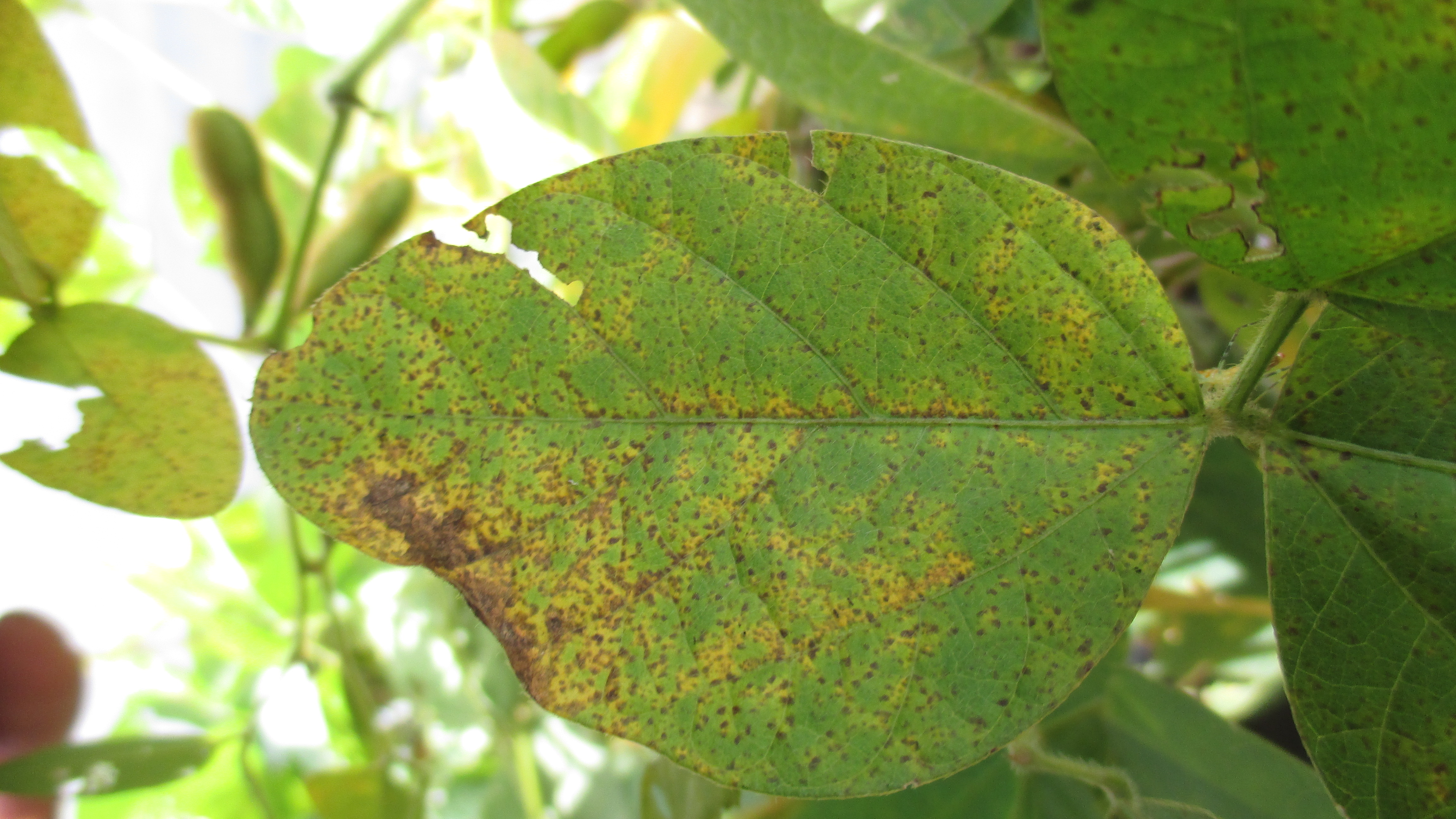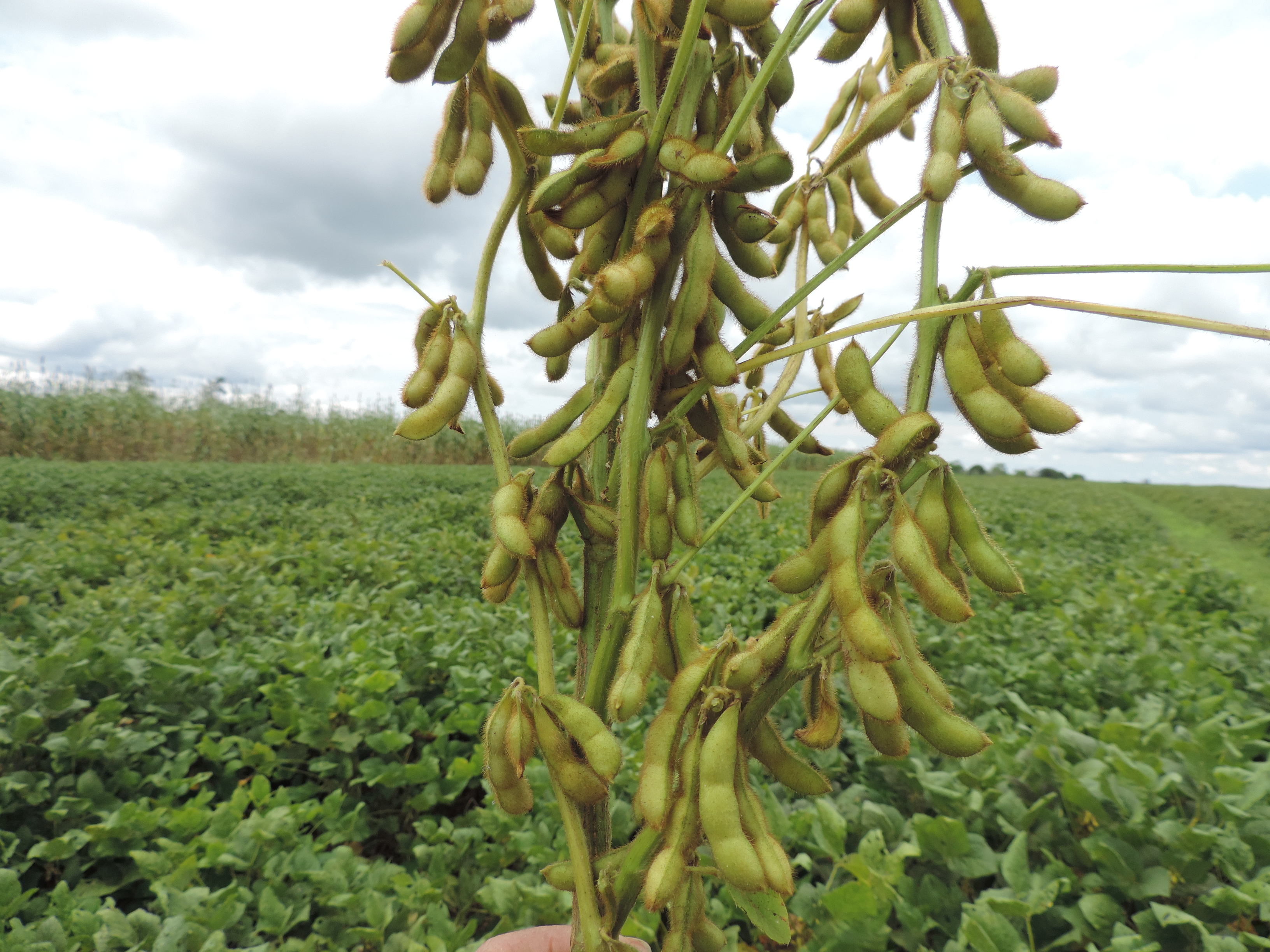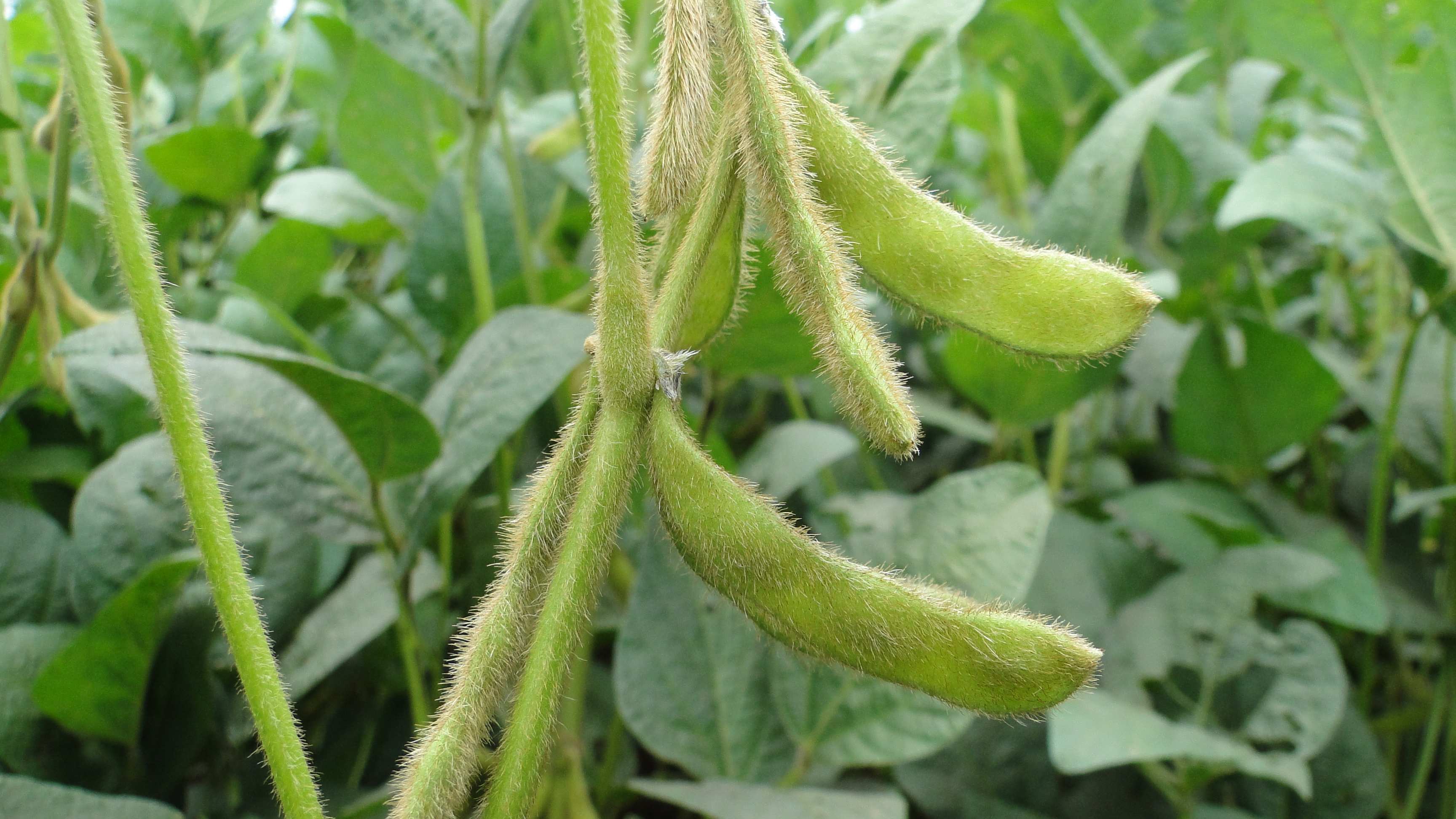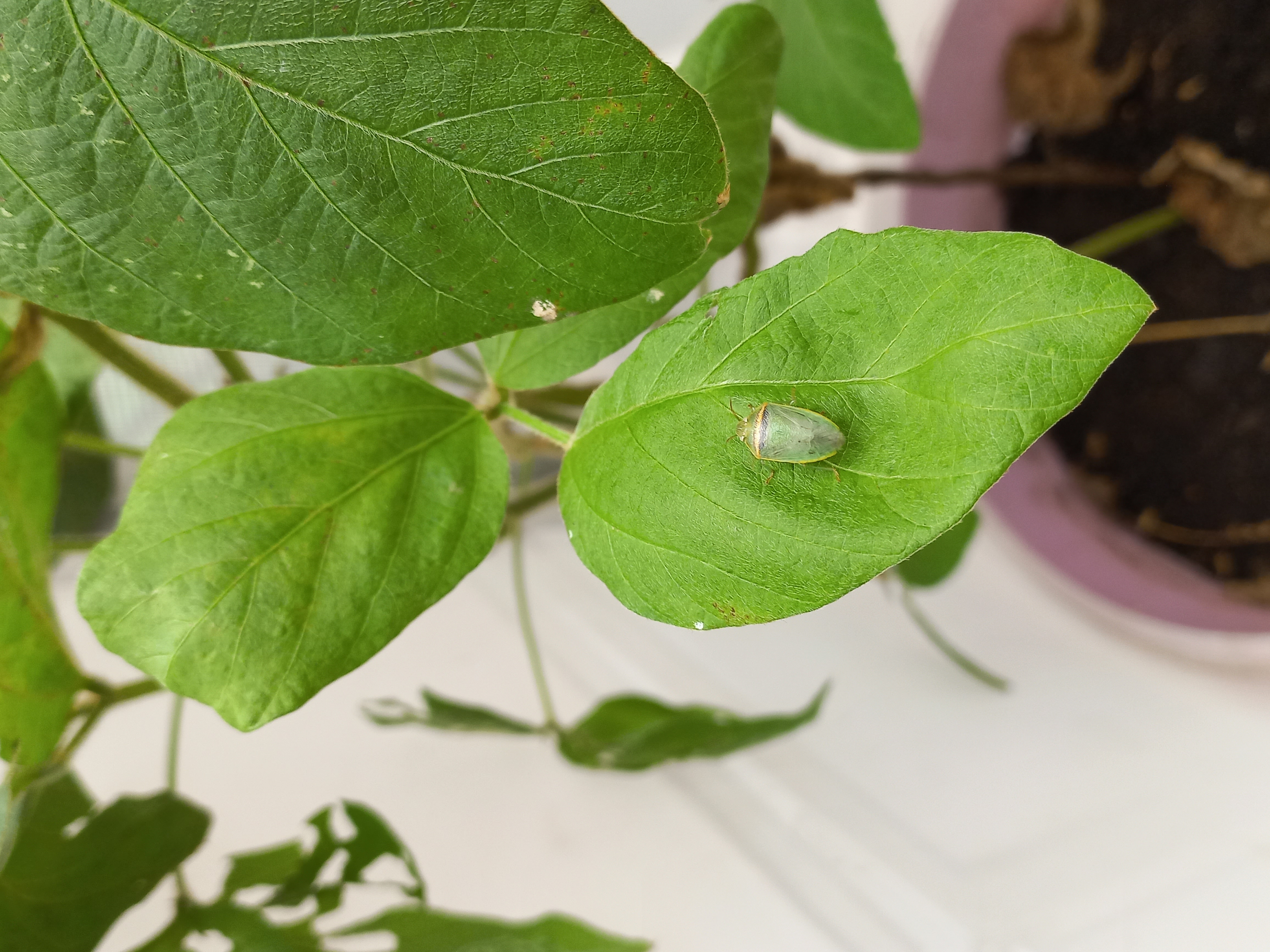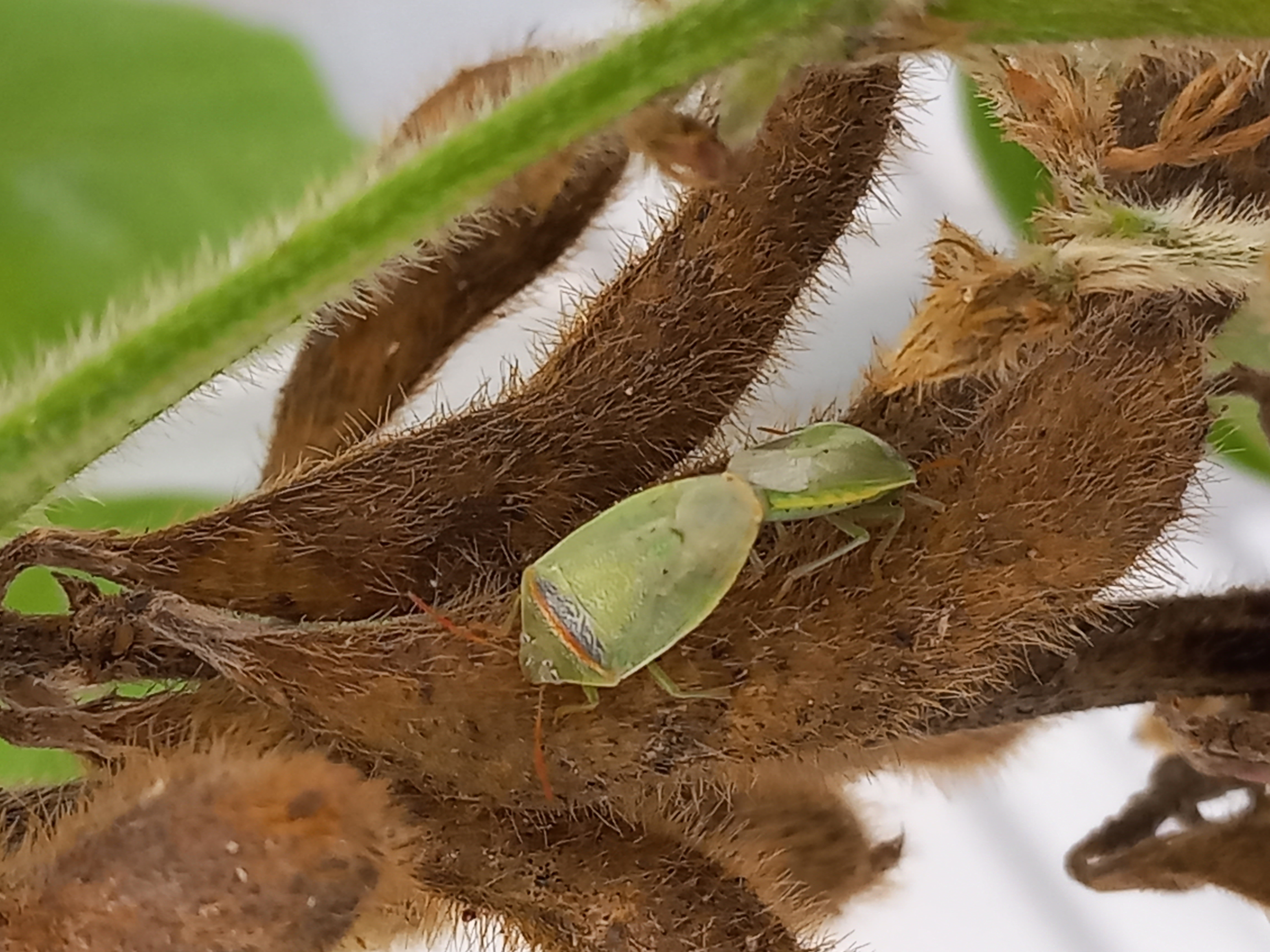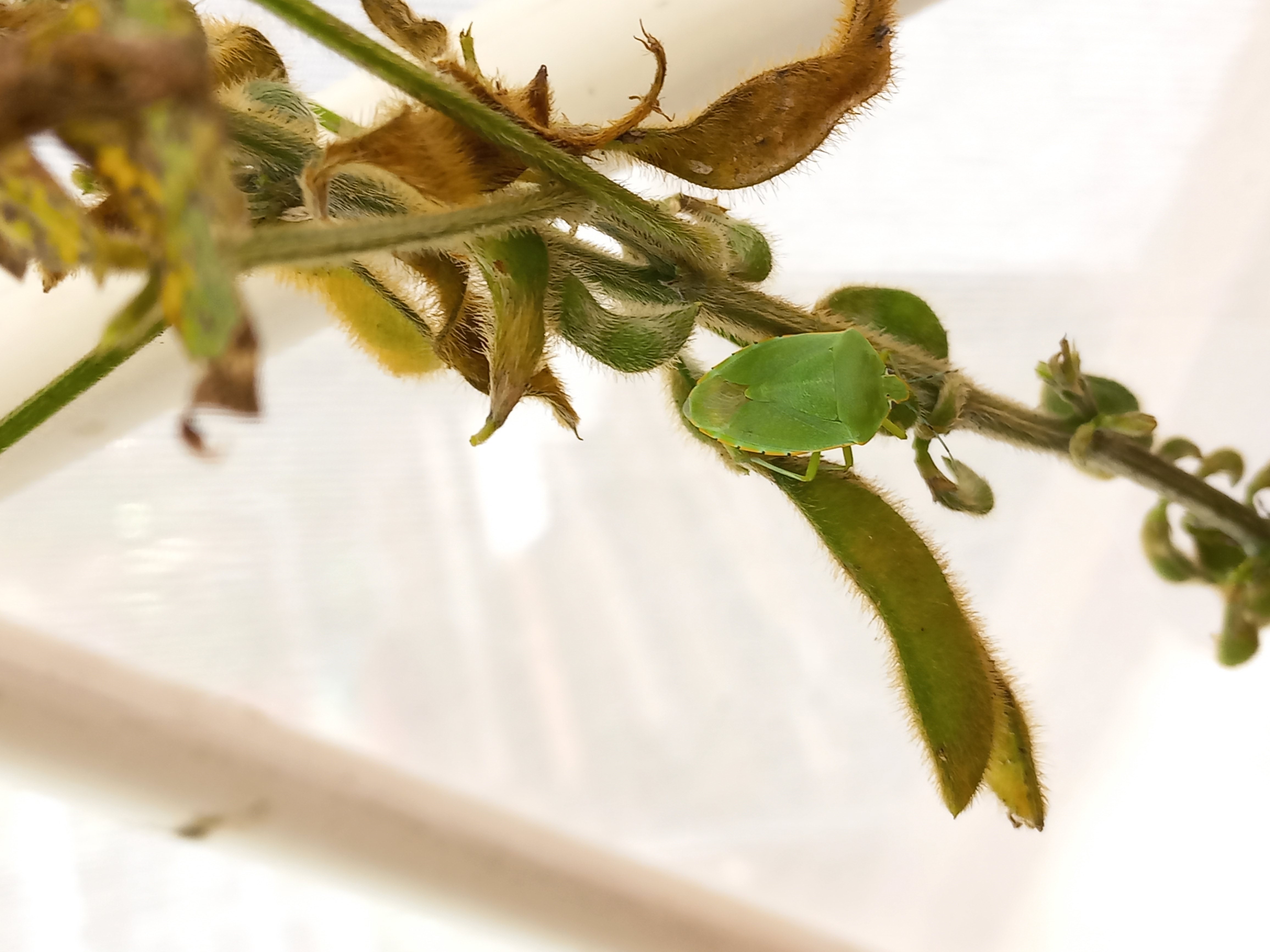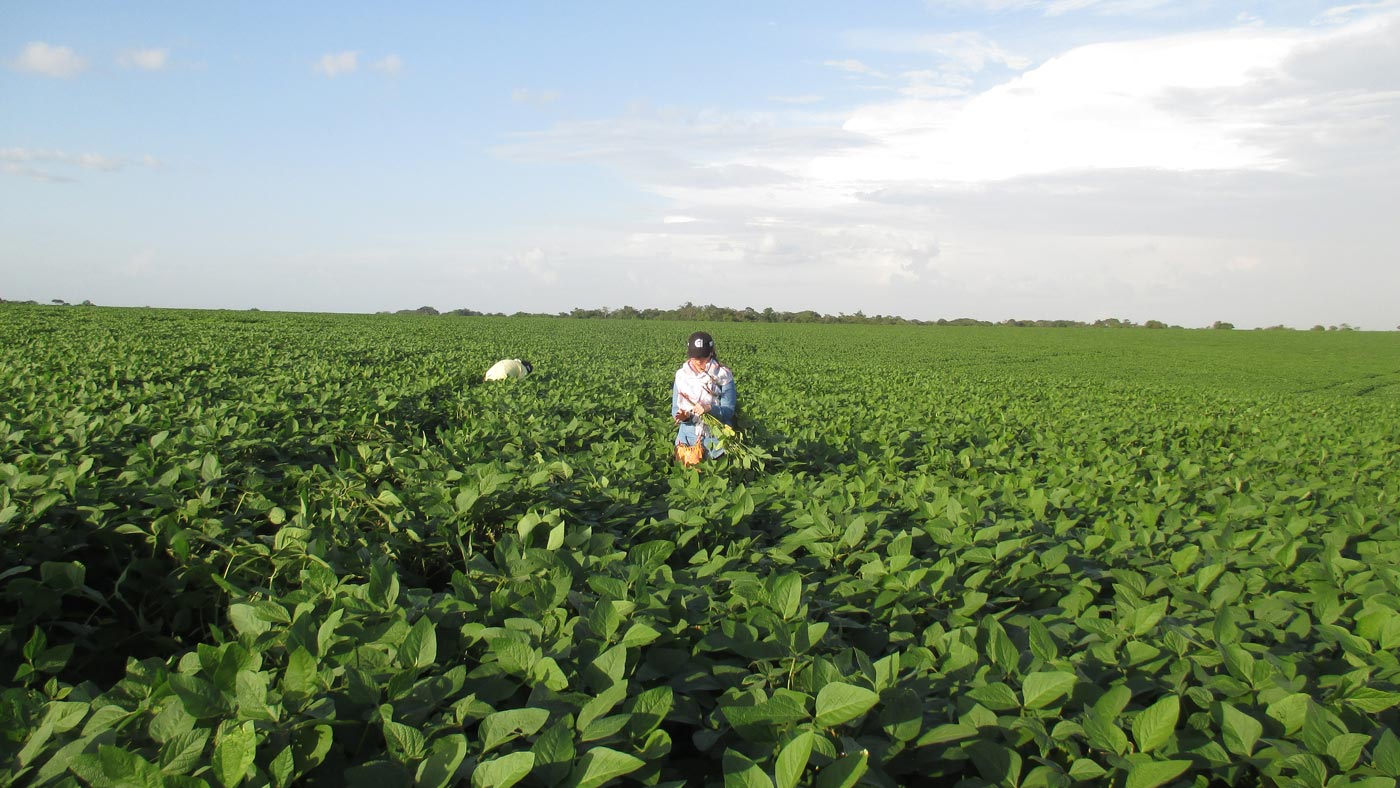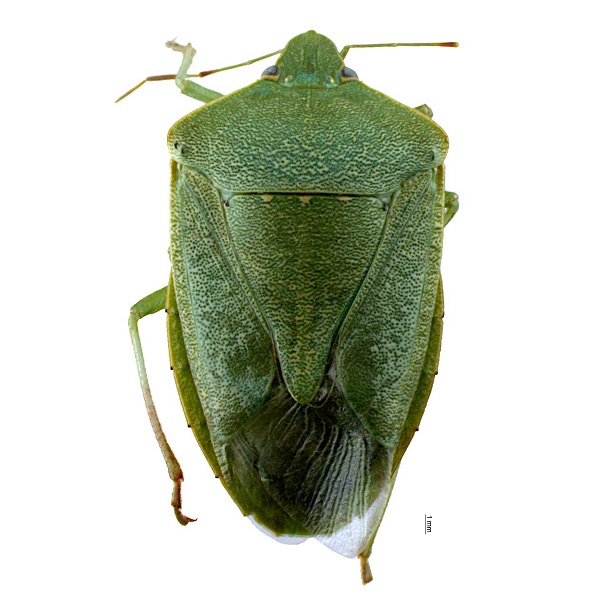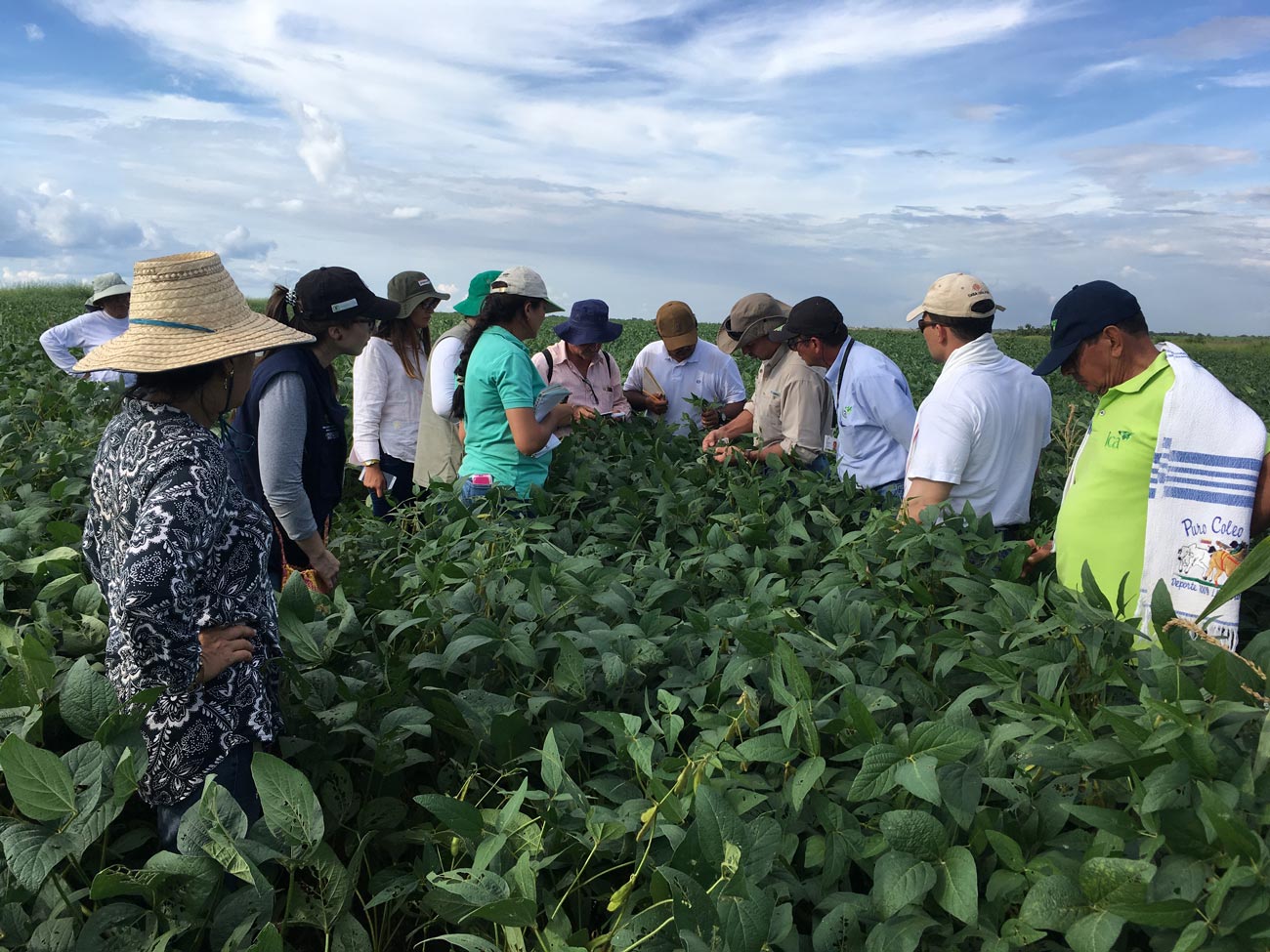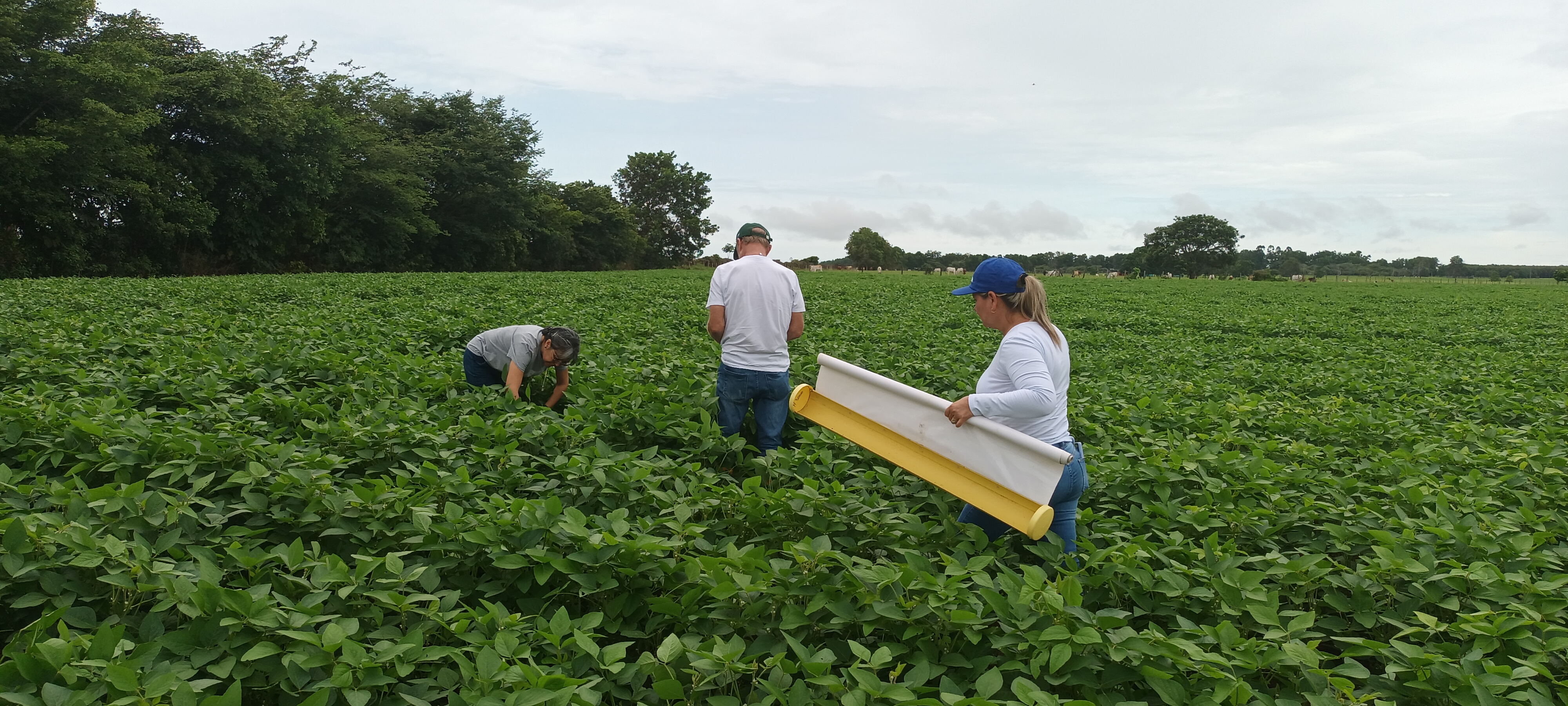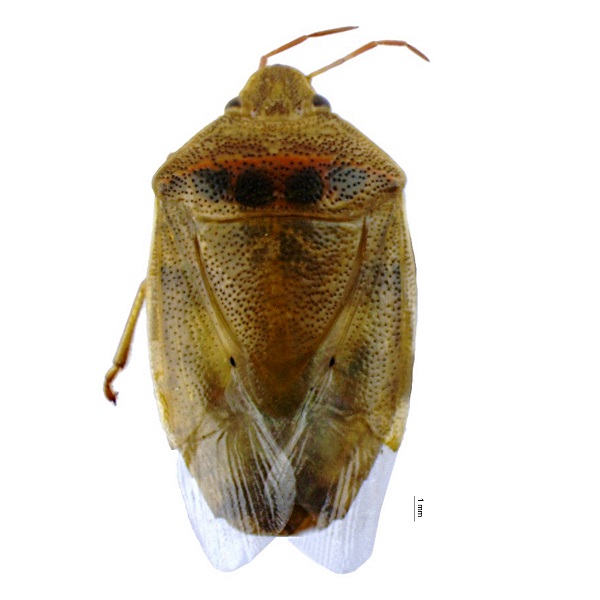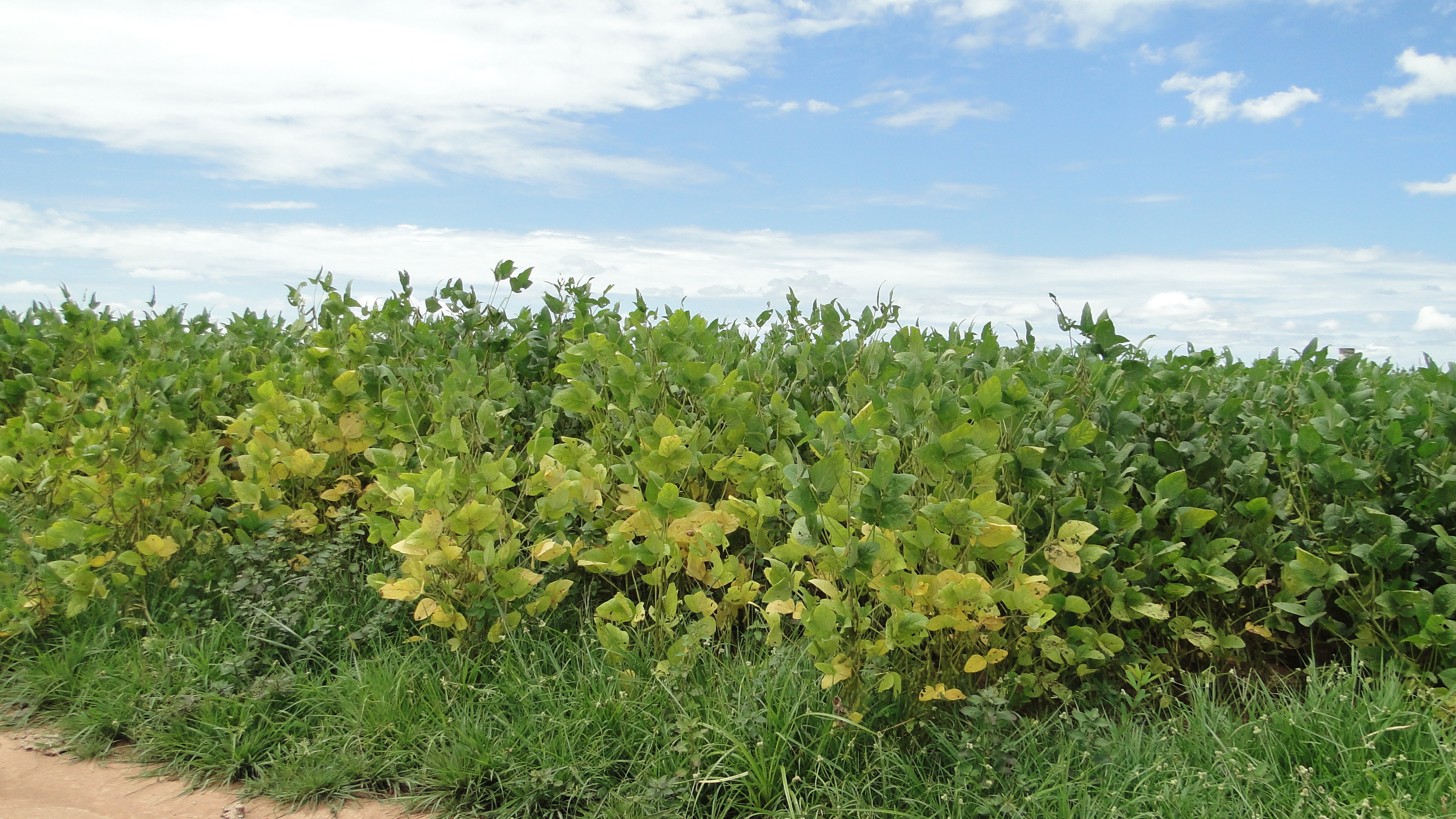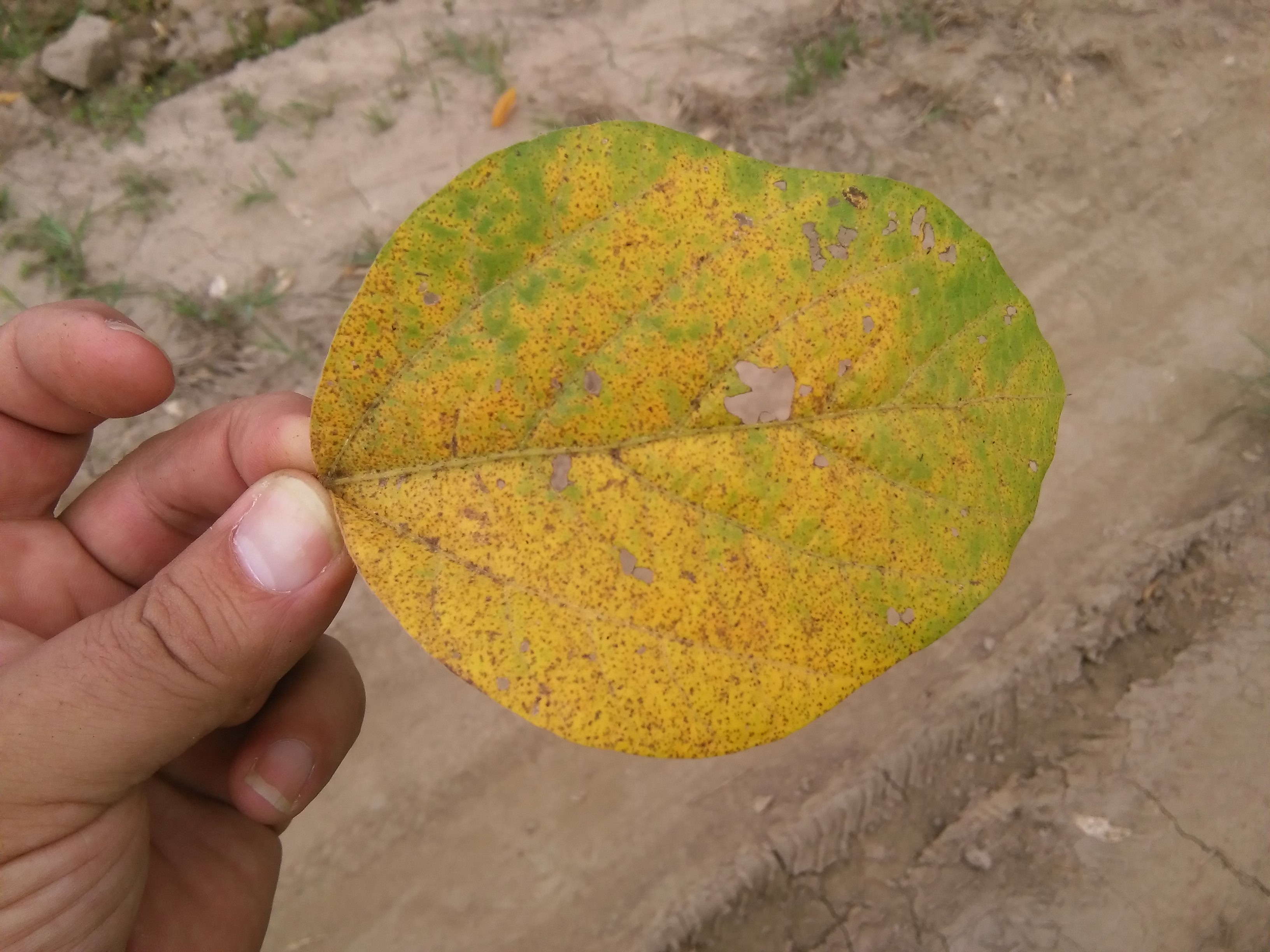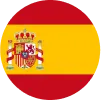Management of rust and bugs in soybean cultivation
Glycine max

- Thematic area:
- Integrated management of the productive system
- Productive system:
- Soybean
- Geographic coverage:
-
Orinoco region
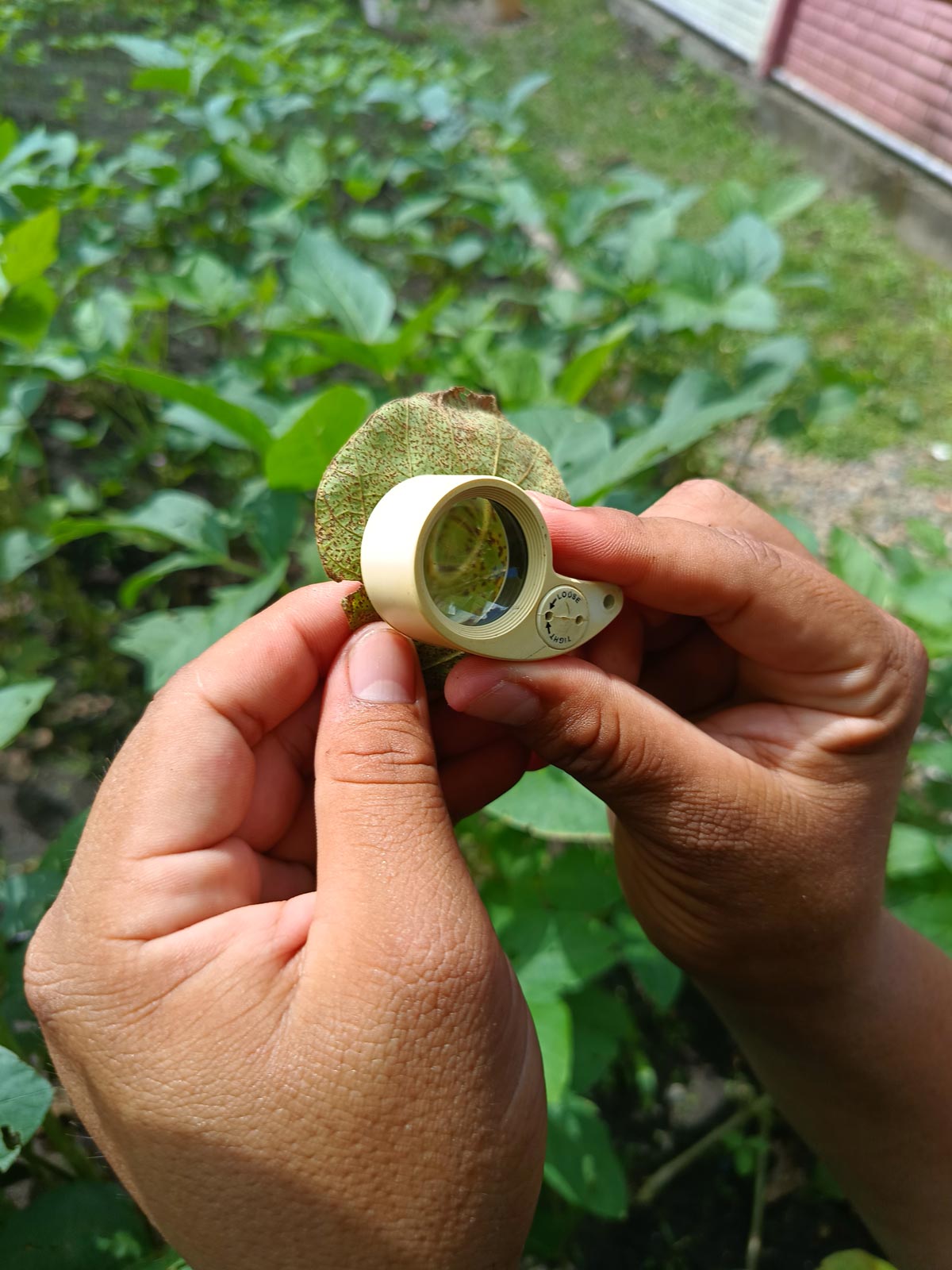
Description
This technology includes a series of recommendations to carry out the early identification, monitoring, and integrated management of the two phytosanitary problems of greatest economic importance in soybean cultivation in the Colombian Orinoquía, which are the Asian soybean rust (Phakopsora pachyrhizi) and the bug complex (Piezodorus guildinii, Nezara viridula, Euchistus rufimanus) under field conditions.
Technical sheets with photographic material are available to recognize symptoms and damage caused.
Additionally, integrated management tactics are included, such as:
-
Sanitary vacuum.
-
Preventive management: use short-cycle varieties, plant at appropriate times, eliminate volunteer plants and alternate hosts, adjust planting density, ensure good nutrition, and avoid drought stress.
-
Curative management: chemical control with active ingredients recommended for each pest, applied in the appropriate phenological stages, following the action thresholds.
By following these recommendations, you will achieve the following:
- Reduce the risk of losses in crop yield as a consequence of the attack of the Asian rust and the bug complex, which can be up to 40 % of the crop yield in the Altillanura and foothill areas of the Department of Meta.
- Reduce the number of pesticide applications per crop cycle to control these pests, favoring the safety of the harvested product.
- Improve the profitability and competitiveness of the producer, with a decrease in insecticides and fungicides, representing nearly 20 % of the total costs.
- Strengthen human capital, social capital, and other capacities of the SNIA.
- Reduce producer uncertainty in choosing an effective management strategy for both pests.
- Reduce the probability of the risk of generating pest resistance to the applied chemical molecules.
- Contribute to reducing the deterioration of ecosystem services related to biodiversity and water quality.
This technological offer allowed Instituto Colombiano Agropecuario ICA to update the phytosanitary status of soybean cultivation in Colombia (updating the Colombian SIPCO Pest System for Asian soybean rust) and is currently implementing the identification and management recommendations for the green stem syndrome and leaf retention of soybeans, in the definition of planting dates for the department of Meta (ICA Resolution No. 01/03/2023).
Its use is recommended for the Altillanura subregion: municipalities of Puerto Gaitán and Puerto López; and the llanero foothills subregion: municipalities of Granada, Fuente de Oro, San Martín, Acacias, and Villavicencio.
Audiovisual content
Manejo fitosanitario | Modelo Productivo de Maíz y Soya.
Síndrome del tallo verde y retención foliar de la soya.
Associated publications
- Foldable: Identificación, monitoreo y manejo de la roya asiática de soya en la Orinoquía colombiana.
- Foldable: Avances en el diagnóstico del síndrome del tallo verde y retención foliar de la soya causado por el nematodo Aphelenchoides besseyi.
- Productive model: Modelo productivo para el cultivo de maíz y soya en la Altillanura colombiana :(paquete tecnológico).
- Scientific article: Phakopsora pachyrhizi is the major pathogen associated with soybean rust in Colombia.
- Scientific article:Caracterización y tipificación socioeconómica en productores de cultivos transitorios ubicados en Piedemonte y Altillanura plana.
Roya Asiática
- Infographic: Recomendaciones para la identificación de la roya asiática de la soya.
- Infographic: Monitoreo de la roya asiática de la soya.
- Infographic: Manejo preventivo de la roya asiática de la soya
- Infographic: Control legal de la roya asiática
- Infographic: Control químico de la roya asiática
Complejo de chinches
- Infographic: Síndrome del tallo verde de la soya (TVRF): enfermedad emergente de la leguminosa en Colombia.
- Infographic: Identificación del complejo de chinches.
- Infographic: Daños causados por las chinches.
- Infographic: Monitoreo de plagas en campo.
- Infographic: Recomendaciones para el manejo de chinches.
Image gallery
